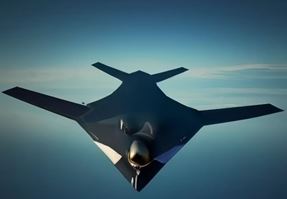NGAD and Its Priority for USAF Amid a Combative Russia & a Belligerent China
NGAD (Next Generation Air Dominance) Program of the USAF, infused with an investment of 20 billion USD over the next 5 years, is an urgent mission for the US Air Force, despite recent challenges. The program aims to develop a cutting-edge Sixth Generation Fighter Jet to uphold the air superiority enjoyed by the US Air Force for decades, in many parts of the world.
A combative Russia, likely aiming to suppress Western superiority in the global order, along with a belligerent, powerful China, has become a serious threat to the USA and its allies. Whether in Ukraine, other NATO members, or for Taiwan and Japan in the South China Sea, Russia and China have continued to forcefully assert their assets or agendas despite resistance funded by the USA.
Technologically advancing Iran and an unpredictable, nuclear-powered North Korea continue to add to challenges in the Middle East and the Korean Peninsula. Under these circumstances, it is imperative that the USA develop the NGAD sixth-generation jets, or at least a version-1 of it, as soon as possible to counter threats in the air and maintain dominance, before it becomes too late.
What is NGAD?
NGAD, or Next Generation Air Dominance, is an initiative by the United States Air Force to develop a sixth-generation fighter jet that will gradually replace the F-22 Raptor. NGAD emerged as a result of the DARPA 2014 Study on Air Dominance.

The program aims to build a fighter jet that will defend against all types of air threats, including radar and missile defense systems. The jet is popularly named as a manned PCA (Penetrating Counter Air) and may operate alongside a fleet of unmanned drone wingmen. The design scheme of the NGAD PCA is to coordinate with stand-off weapons, cyber warfare, and electromagnetic warfare, eliminating the need for close combat or dogfights. Essentially, it constitutes a family consisting of a manned PCA and a fleet of drone wingmen, prepared for all kinds of air threats and offensive operations.
In 2022, USAF Secretary Mr. Frank Kendall declared that the program is ready to enter the engineering, design, and manufacturing stage.

Challenges to NGAD
The cost of the NGAD program has been the main hurdle preventing it from progressing at the necessary speed. There have been rumors of the NGAD project facing cancellation due to budget constraints, with the USAF facing tough decisions to balance the 2026 budget. Reportedly, the ambitious project costs USD 300 million per jet, which is a significant obstacle for the program.
Ongoing research and development efforts to upgrade the F-35 Block 4 and the CCA concept are possibly overshadowing the NGAD initiative. However, cancellation or delays in the NGAD program may result in prolonged use of the F-35 and increased strain on the F-22 Raptor, which is intended to be phased out gradually.

The technological advancements in the defense sectors of Russia and China have already placed the USA under pressure, particularly in research on sixth-generation jets and hypersonic missiles.
The Clock Is ticking.
Times are ahead to see whether the program is cancelled or delayed or re-configured, because the confusing statements from USAF leaders project some sort of dilemma, as if they are pushed to wall by the reality of budgets.

By 2030 and beyond, the absence of NGAD poses a significant challenge for the USA on the battlefield. Even before this deadline, there could be vulnerable scenarios where the US Air Force might need to engage in multiple global fronts simultaneously. There is a persistent rise in troubling alliances globally, notably the axis involving Russia, China, Iran, and North Korea. Therefore, in an unstable world with numerous active warzones, it becomes imperative to maintain a fully equipped, modernized air force capable of neutralizing threats worldwide. Without NGAD, US dominance of the skies would be compromised.
The Assurance:
Amid the uncertainty over USAF NGAD Sixth Generation Fighter Program, Secretary Kendall assured that the program is stable and is not dead.

While reassurance was deemed necessary, military experts and strategists strongly caution against any delay or cancellation of the NGAD project. Such actions could jeopardize US Air Force air superiority on a global scale. The United States must strike a fiscal balance while addressing priorities such as nuclear modernization, NGAD, hypersonic missiles, and F-35 upgrades concurrently.
The F-35 alone cannot ensure victory for the USAF; it is the NGAD system that is envisioned to secure future victories for the United States. Meanwhile, the F-22 Raptor‘s role is not intended to be permanent. Halting or delaying NGAD would create a technological gap that could significantly set back the US Air Force.

One thought on “NGAD and Its Priority for USAF Amid a Combative Russia & a Belligerent China”